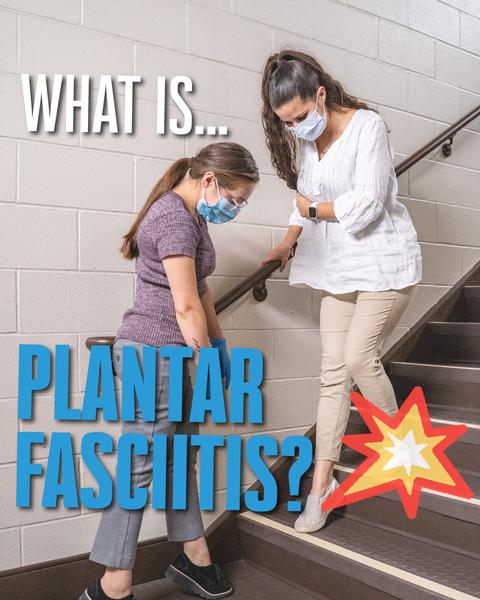Plantar Fasciitis- What is it, How to Avoid It, and What You Can Do If It’s Already Developed
Dr. Bryan Duran, PT, DPT - August 11, 2020
Plantar Fasciitis- How to Avoid It, and What You Can Do If It’s Already Developed
What is the plantar fascia?
Your plantar fascia is a thick, dense tissue that connects your heel bone to the base of your toes, and supports the arch of your foot. As you place more weight or pressure on your foot, this tissue is supposed to gently expand, allowing a shock absorption in the foot, and springing it back to it’s original shape once the weight is lifted.
What often gets forgotten is that it doesn’t act alone to ensure this motion can be repeated thousands of times throughout the day. The muscles within your foot, as well as the muscles of the calf, can contribute to a strong, pain-free arch.
What is plantar fasciitis?
Plantar fasciitis occurs when too much strain is placed on the plantar fascia, creating micro-traumas that are not healing as quickly as they are being produced. This causes long-term inflammation and pain.
The symptoms are most often a sharp pain at the heel near your arch, in the arch itself, or occasionally at the balls of the feet. The symptoms are most notable when the fascia has been tight for an extended time, such as first thing in the morning, or after a long period of sitting, especially AFTER being active prior to the rest.
How can I prevent it?
To understand prevention, we first have to look at causes. Some common causes are:
- Increased activity- a runner who adds too many miles per week, or someone who is pretty sedintary at work all week, then takes on a big hike or house project
- Abnormal foot structure- if you naturally have a fallen arch, or an abnormally tall arch, you are at higher risk
- Weight gain- adding more weight to your body essentially adds more weight to every step, and in turn the plantar fascia
The simplest, but also potentially hardest, way to combat the first and third causes there, is to maintain a consistent, active lifestyle, and to avoid any sudden changes in exercise habits. Adding activity is great, just be sure to do it gradually and slow down if pain starts to develop.
An abnormal foot structure can be more difficult to combat, especially if it has been present your entire life. In this case, a physical therapist can do an assessment to see if you would be appropriate for over-the-counter or custom foot orthotics.
If the “structural” issues have developed in recent years, however, it is likely that the cause is weakness in the supporting muscles of the foot and ankle that were mentioned earlier. In this case, strengthening of the internal foot muscles and ankle muscles is a great place to start.
There are loads of articles that can point you in the right direction on where to get started with this, or you could consult a physical therapist to put a preventative exercise program in place, especially if you plan to increase your activity in the near future and are between 40 and 60 years old (higher risk of developing plantar fasciitis).
What if I’ve already got it?
That’s OK!
Plantar fasciitis is generally very treatable with conservative treatment, with only severe cases requiring non-conservative care. Start out by reducing time on your feet for a few days as much as possible, icing the feet, and starting with some of the foot strengthening exercises that can be found online.
Next, use a night splint designed to keep your foot in a 90 degree or greater angle, in order to prevent the plantar fascia from excessively shortening overnight. Excess shortening leads to excess irritation and inflammation in the morning.
In addition to these, try rolling the arch of your foot on a golf ball or frozen water bottle in the mornings, to pre-stretch the fascia before placing your full weight on it. This will help prevent sharp pains, which can start the inflammation cycle over.
If these tips don’t significantly reduce your pain in 5-7 days, reach out to a physical therapist! The longer the symptoms last, the more difficult they are to eliminate, so make sure to be proactive, and ask for help if it is needed.
Stay active, stay safe.
